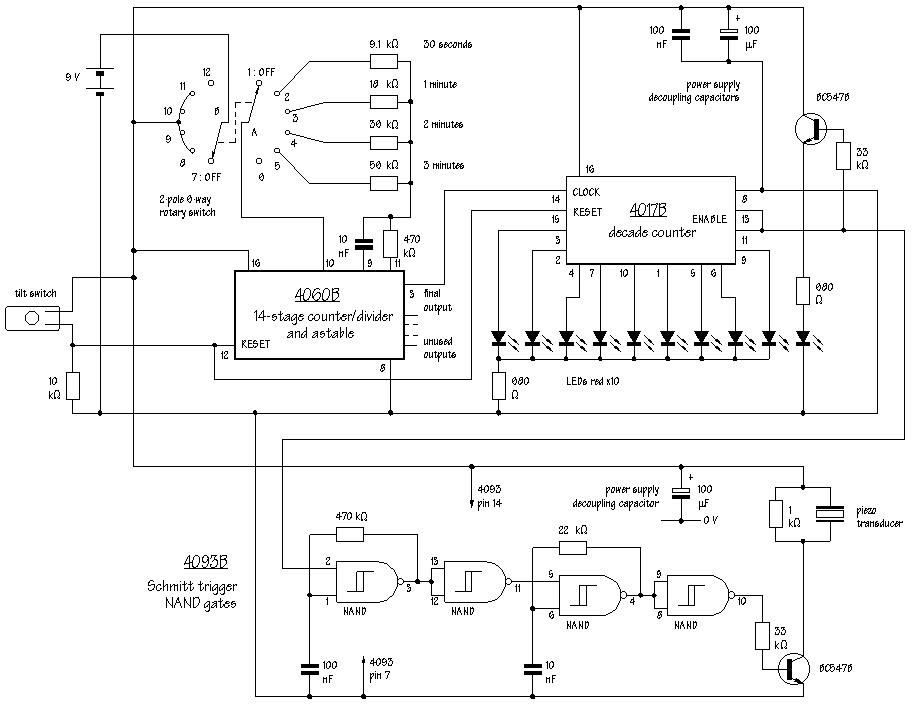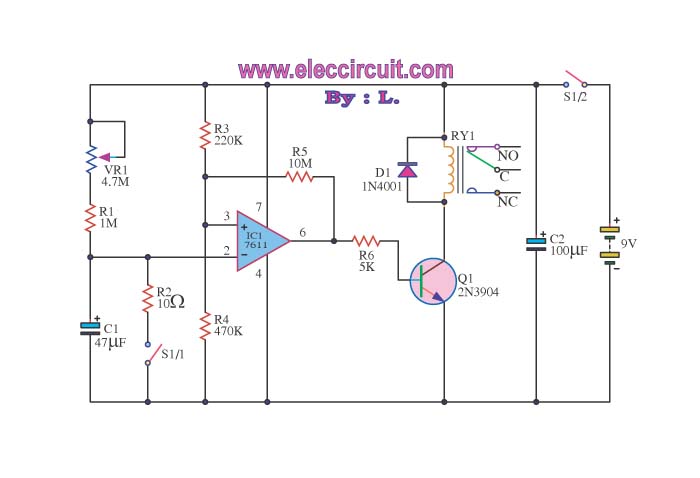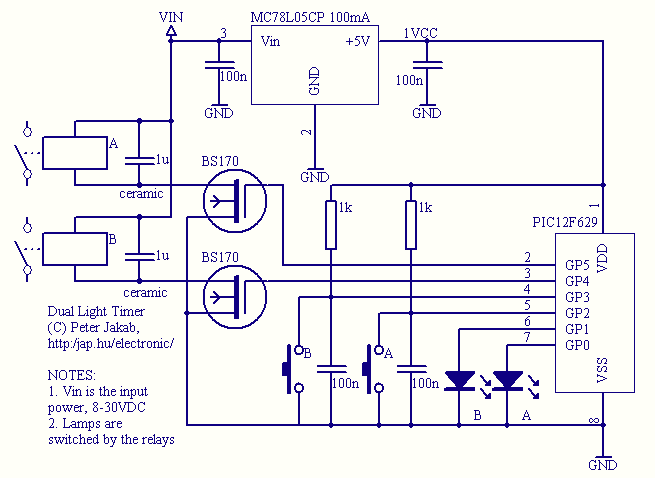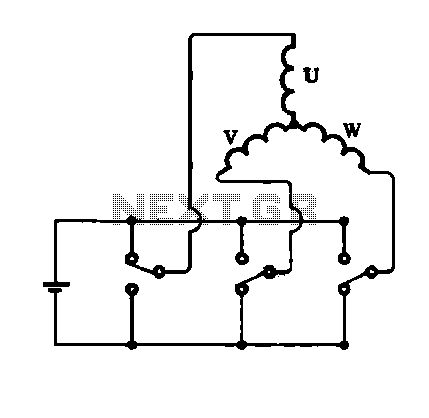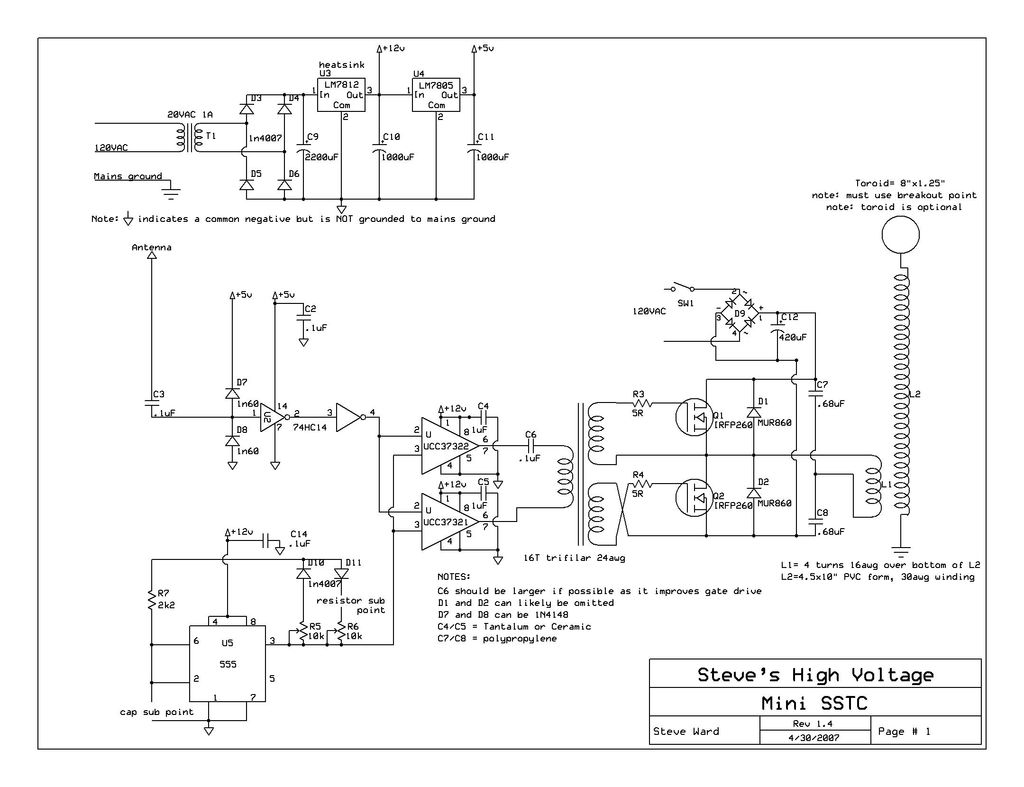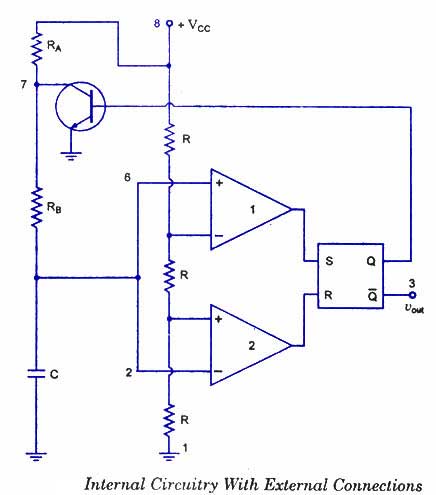
Mark 1 Coil Timer

This coil gun design utilizes arbitrary on/off times that are calculated based on the basic equations of motion, rather than chosen randomly. The coils do not activate at uniform intervals; the first coil remains energized for the longest duration since the projectile travels slowest at that stage. Conversely, the last coil is active for the shortest time as the projectile moves faster through that section. A circuit is required to measure short time periods, allowing for easy adjustments to explore different timing variations for optimal performance. Switches, rather than jumpers, are needed to select the start and stop times for each coil. A clock circuit generates a continuous stream of pulses, while a simple 8-bit binary counter chip counts the pulses sequentially. Its output produces a regular 8-bit binary number, dividing the clock pulses into 256 time intervals, or fewer if the counter is reset before reaching its maximum count. Each output line requires a small pull-up resistor to maintain a high state (logic 1) when the switch is open, providing noise immunity from unterminated inputs. These pull-up resistors are available in single in-line packages (SIP) for multiple resistors at once, with one pin connected to Vcc. The output from the 8-bit comparator feeds into a latch, which remains high (logic 1) for only one clock cycle, while the latch stays high until another comparator signal turns it off. Multiple coil timer decoders can be employed to supply the necessary timing for the latches; each coil latch relies on two time decoders: one for activation and another for deactivation. For four coils, a maximum of eight decoder circuits is required, although typically only one additional time decoder is necessary beyond the number of coils since one coil often turns off simultaneously as another turns on. The prototype discussed uses three coils, necessitating four time decoders. An additional time decoder is illustrated to demonstrate potential expansions. The design energizes two coils at a time to maintain the projectile in the optimal position, starting with the first two coils activated. It subsequently turns off the first coil while energizing the third, keeping the second and third coils active together. The JK flip-flops manage the coils, with the J input activating the latch and the K input deactivating it. Clock input lines, connected to a high-speed free-running clock oscillator, and the Reset line for each latch, which should be linked to the reset signal from the trigger, are omitted for simplicity. This reset function ensures the system is in a known state before the initial firing after power-up.
The coil gun circuit design is centered around precise timing control to optimize projectile acceleration and performance. The clock circuit serves as the heartbeat of the system, generating a consistent pulse train that the 8-bit binary counter uses to create discrete timing intervals. Each interval allows for fine-tuning of the coil activation times, which is crucial for achieving the desired projectile speed and efficiency. The use of pull-up resistors on the output lines of the counter ensures that the system remains stable and resistant to noise, which is especially important in high-speed applications where electromagnetic interference could disrupt operation.
The integration of JK flip-flops provides a robust mechanism for controlling coil activation and deactivation, allowing for smooth transitions between different states. The careful design of the timing decoders ensures that each coil can be activated and deactivated with precision, minimizing the risk of projectile misalignment and maximizing the overall efficiency of the coil gun. The architecture allows for scalability, enabling additional coils and timing decoders to be added as needed, making it adaptable for various applications. Overall, this circuit design exemplifies a sophisticated approach to coil gun technology, emphasizing the importance of timing and control in achieving optimal projectile performance.This coil gun design uses on/off times that are rather arbitrary. Well, not chosen at random, but the times are calculated in the spreadsheet according to the basic equations of motion. The coils do not turn on/off at identical intervals. The first coil is on for the longest period because the projectile is moving the slowest. It is moving much fa ster through the last coil, so it`s on for the shortest period. We need a circuit to measure out small period of time. It should be easy to change so we can try different timing variations for the best performance. In short, we need switches (not jumpers) to select the start-time and stop-time for each coil. The clock circuit generates a steady stream of pulses. A simple 8-bit binary counter chip will count the pulses one-by-one. Its output is a regular 8-bit binary number, which divides the clock pulses into 256 time intervals. (Or less, if we reset the counter before it reaches maximum count. ) Each line needs a small pull-up resistor to ensure it stays high (a logic-1) when the switch is open. The pull-ups also provide noise immunity from unterminated inputs. The pull-ups come in a sip (single in-line package) for 8, 9 or 10 resistors at a time, with one pin tied to Vcc.
The output of the 8-bit comparator goes to a latch. The comparator`s output remains high (logic 1) for only one clock cycle. The latch stays high until another comparator turns it off. You can use several of these coil timer decoders to provide all the necessary timing for the latches. Each coil latch takes two time decoders: one time decoder turns it on, and one time decoder turns it off.
So four coils would need at most eight decoder circuits. However, usually one coil turns off at the exact time another turns on. So you only need one more time decoder than coils. My prototype uses three coils, so I used four time decoders. An extra time decoder is shown in the figure below, to show how additional decoders could be added. My design always energizes two coils together (to keep the projectile in the "sweet spot"). It begins by turning on the first two coils. Then it turns off coil 1 while it turns on coil 3, leaving coil 2 and 3 on together. The JK flip flops control the coils. The J input turns on the latch, and the K input turns it off again. Not shown for simplicity, is their clock input lines, which are connected to the high speed free-running clock oscillator. The Reset line to each latch is also not shown. It should be connected to the reset signal from the trigger. This will hold them in a known good state before the first firing after power-up. 🔗 External reference
The coil gun circuit design is centered around precise timing control to optimize projectile acceleration and performance. The clock circuit serves as the heartbeat of the system, generating a consistent pulse train that the 8-bit binary counter uses to create discrete timing intervals. Each interval allows for fine-tuning of the coil activation times, which is crucial for achieving the desired projectile speed and efficiency. The use of pull-up resistors on the output lines of the counter ensures that the system remains stable and resistant to noise, which is especially important in high-speed applications where electromagnetic interference could disrupt operation.
The integration of JK flip-flops provides a robust mechanism for controlling coil activation and deactivation, allowing for smooth transitions between different states. The careful design of the timing decoders ensures that each coil can be activated and deactivated with precision, minimizing the risk of projectile misalignment and maximizing the overall efficiency of the coil gun. The architecture allows for scalability, enabling additional coils and timing decoders to be added as needed, making it adaptable for various applications. Overall, this circuit design exemplifies a sophisticated approach to coil gun technology, emphasizing the importance of timing and control in achieving optimal projectile performance.This coil gun design uses on/off times that are rather arbitrary. Well, not chosen at random, but the times are calculated in the spreadsheet according to the basic equations of motion. The coils do not turn on/off at identical intervals. The first coil is on for the longest period because the projectile is moving the slowest. It is moving much fa ster through the last coil, so it`s on for the shortest period. We need a circuit to measure out small period of time. It should be easy to change so we can try different timing variations for the best performance. In short, we need switches (not jumpers) to select the start-time and stop-time for each coil. The clock circuit generates a steady stream of pulses. A simple 8-bit binary counter chip will count the pulses one-by-one. Its output is a regular 8-bit binary number, which divides the clock pulses into 256 time intervals. (Or less, if we reset the counter before it reaches maximum count. ) Each line needs a small pull-up resistor to ensure it stays high (a logic-1) when the switch is open. The pull-ups also provide noise immunity from unterminated inputs. The pull-ups come in a sip (single in-line package) for 8, 9 or 10 resistors at a time, with one pin tied to Vcc.
The output of the 8-bit comparator goes to a latch. The comparator`s output remains high (logic 1) for only one clock cycle. The latch stays high until another comparator turns it off. You can use several of these coil timer decoders to provide all the necessary timing for the latches. Each coil latch takes two time decoders: one time decoder turns it on, and one time decoder turns it off.
So four coils would need at most eight decoder circuits. However, usually one coil turns off at the exact time another turns on. So you only need one more time decoder than coils. My prototype uses three coils, so I used four time decoders. An extra time decoder is shown in the figure below, to show how additional decoders could be added. My design always energizes two coils together (to keep the projectile in the "sweet spot"). It begins by turning on the first two coils. Then it turns off coil 1 while it turns on coil 3, leaving coil 2 and 3 on together. The JK flip flops control the coils. The J input turns on the latch, and the K input turns it off again. Not shown for simplicity, is their clock input lines, which are connected to the high speed free-running clock oscillator. The Reset line to each latch is also not shown. It should be connected to the reset signal from the trigger. This will hold them in a known good state before the first firing after power-up. 🔗 External reference
